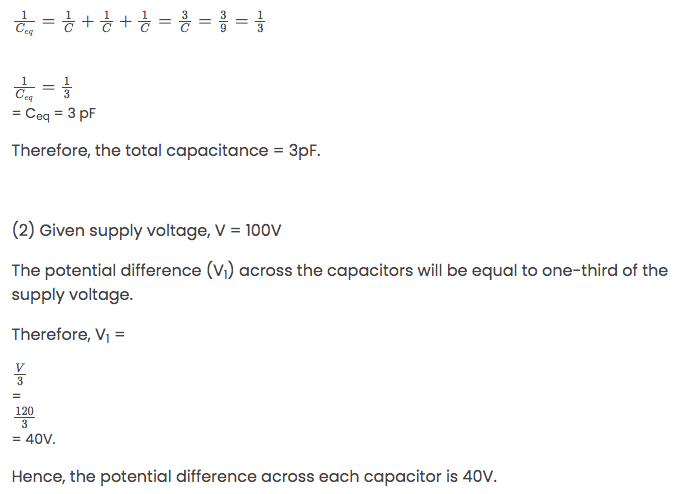Therefore, at a distance of 10 cm from the positive charge, the potential is zero between the two charges.
Let us assume a point P at a distance ‘s’ from the negative charge is outside the system, having a potential zero.
So, for the above condition, the potential is given by
Therefore, the potential is zero at a distance of 40 cm from the positive charge outside the system of charges.
Q 2.2) A regular hexagon of side 10 cm has a charge of 5 µC at each of its vertices. Calculate the potential at the centre of the hexagon.
Solution:
The figure shows a regular hexagon containing charges q at each of its vertices.
(1) Identify the equipotential surface of the system.
(2) What is the direction of the electric field at every point on this surface?
Solution:
(1) An equipotential surface is defined as the surface over which the total potential is zero. In the given question, the plane is normal to line AB. The plane is located at the mid-point of line AB as the magnitude of the charges is the same.
(2) At every point on this surface, the direction of the electric field is normal to the plane in the direction of AB.
Q 2.4) A spherical conductor of radius 12 cm has a charge of 1.6 x 10-7C distributed uniformly on its surface. What is the electric field
(1) inside the sphere?
(2) just outside the sphere?
(3) at a point 18 cm from the centre of the sphere?
Solution:
(1) Given,
Radius of spherical conductor, r = 12cm = 0.12m
The charge is distributed uniformly over the surface, q = 1.6 x 10-7 C.
The electric field inside a spherical conductor is zero.
(2) Electric field E, just outside the conductor, is given by the relation,
Q 2.5) A parallel plate capacitor with air between the plates has a capacitance of 8pF (1pF = 10-12 F. What will be the capacitance if the distance between the plates is reduced by half and the space between them is filled with a substance of dielectric constant 6?
Solution:
Given,
Capacitance, C = 8pF.
In the first case, the parallel plates are at a distance ‘d’ and are filled with air.
Air has a dielectric constant, k = 1
Capacitance, C =
Q 2.6) Three capacitors connected in series have a capacitance of 9pF each.
(1) What is the total capacitance of the combination?
(2) What is the potential difference across each capacitor if the combination is connected to a 120 V supply?
Solution:
(1) Given,
The capacitance of the three capacitors, C = 9 pF
Equivalent capacitance (ceq) is the capacitance of the combination of the capacitors given by











.png)



0 Comments